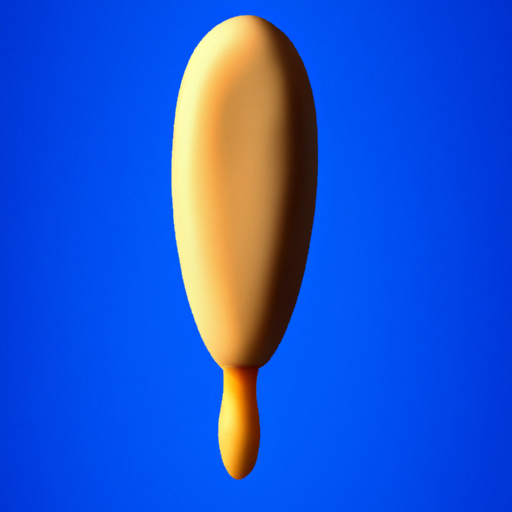-
Table of Contents
Biomimicry in Design: Taking Inspiration from Nature’s Patterns
When it comes to design, nature has always been a source of inspiration. From the intricate patterns found in a seashell to the efficient structure of a bird’s wing, the natural world is filled with remarkable designs that have evolved over millions of years. Biomimicry, the practice of taking inspiration from nature’s patterns and applying them to human design, has gained significant attention in recent years. This article explores the concept of biomimicry in design, its benefits, and provides examples of successful applications in various industries.
What is Biomimicry?
Biomimicry, derived from the Greek words “bios” meaning life and “mimesis” meaning to imitate, is the practice of emulating nature’s designs and processes to solve human challenges. It involves studying and understanding the principles, patterns, and strategies found in nature and applying them to design solutions.
By observing and learning from nature, designers can create innovative and sustainable solutions that are both efficient and effective. Biomimicry goes beyond simply copying nature’s forms; it seeks to understand the underlying principles and adapt them to human needs.
The Benefits of Biomimicry in Design
Biomimicry offers numerous benefits in the field of design. By drawing inspiration from nature, designers can create solutions that are not only aesthetically pleasing but also highly functional and sustainable. Here are some key advantages of incorporating biomimicry into design:
- Sustainability: Nature has perfected sustainable systems over millions of years. By mimicking these systems, designers can create products and processes that are environmentally friendly and have a minimal impact on the planet.
- Efficiency: Nature’s designs are incredibly efficient. By studying and replicating these designs, designers can create products that optimize energy and resource usage.
- Resilience: Nature has evolved to adapt and survive in various conditions. By understanding the resilience of natural systems, designers can create products that are more robust and adaptable.
- Innovation: Nature’s designs often push the boundaries of what is possible. By taking inspiration from nature, designers can unlock new possibilities and create innovative solutions.
- Aesthetics: Nature’s patterns and forms are often visually appealing. By incorporating these elements into design, products can be more attractive and engaging to users.
Examples of Biomimicry in Design
Biomimicry has been successfully applied in various industries, leading to groundbreaking innovations. Here are some notable examples:
1. Velcro
Velcro, the popular hook-and-loop fastening system, was inspired by the burrs that stuck to the clothes of Swiss engineer George de Mestral during a walk in the woods. He examined the burrs under a microscope and discovered tiny hooks that allowed them to cling to fabric. This observation led to the development of Velcro, which has since found applications in clothing, aerospace, and many other industries.
2. Shinkansen Bullet Train
The design of the Shinkansen bullet train in Japan was inspired by the beak of the kingfisher bird. Engineers noticed that the bird could dive into water without creating a splash due to its streamlined beak. By mimicking this design, the Shinkansen was able to achieve high speeds while minimizing noise and energy consumption.
3. Self-Cleaning Surfaces
Lotus leaves have a unique ability to repel water and keep themselves clean. This self-cleaning property, known as the “lotus effect,” has been replicated in various materials and coatings. By mimicking the microstructure of lotus leaves, designers have created self-cleaning surfaces for applications such as windows, solar panels, and even clothing.
4. Wind Turbine Blades
Wind turbine blades have been redesigned to mimic the shape and structure of humpback whale fins. The tubercles found on the leading edge of humpback whale fins inspired the development of turbine blades with similar bumps. These biomimetic blades have been shown to increase energy capture and reduce noise, making wind turbines more efficient and environmentally friendly.
The Future of Biomimicry in Design
Biomimicry has the potential to revolutionize design across various industries. As our understanding of nature’s patterns and processes deepens, we can expect to see even more innovative applications of biomimicry. Here are some areas where biomimicry is likely to play a significant role in the future:
- Architecture: Biomimicry can inspire the design of energy-efficient buildings that integrate with their surroundings and adapt to changing conditions.
- Transportation: By studying the efficiency and aerodynamics of natural systems, designers can create more sustainable and efficient modes of transportation.
- Materials: Biomimicry can lead to the development of new materials that are stronger, lighter, and more sustainable.
- Healthcare: Nature’s designs can provide insights into improving medical devices, drug delivery systems, and even the design of hospitals and healthcare facilities.
- Urban Planning: Biomimicry can inform the design of cities that are more sustainable, resilient, and in harmony with nature.
Conclusion
Biomimicry in design offers a powerful approach to innovation and sustainability. By learning from nature’s patterns and processes, designers can create solutions that are not only aesthetically pleasing but also highly functional and environmentally friendly. The examples mentioned in this article demonstrate the potential of biomimicry to revolutionize various industries. As we continue to explore and understand nature’s designs, the possibilities for biomimicry in design are endless. By embracing biomimicry, we can create a more sustainable and harmonious future.
